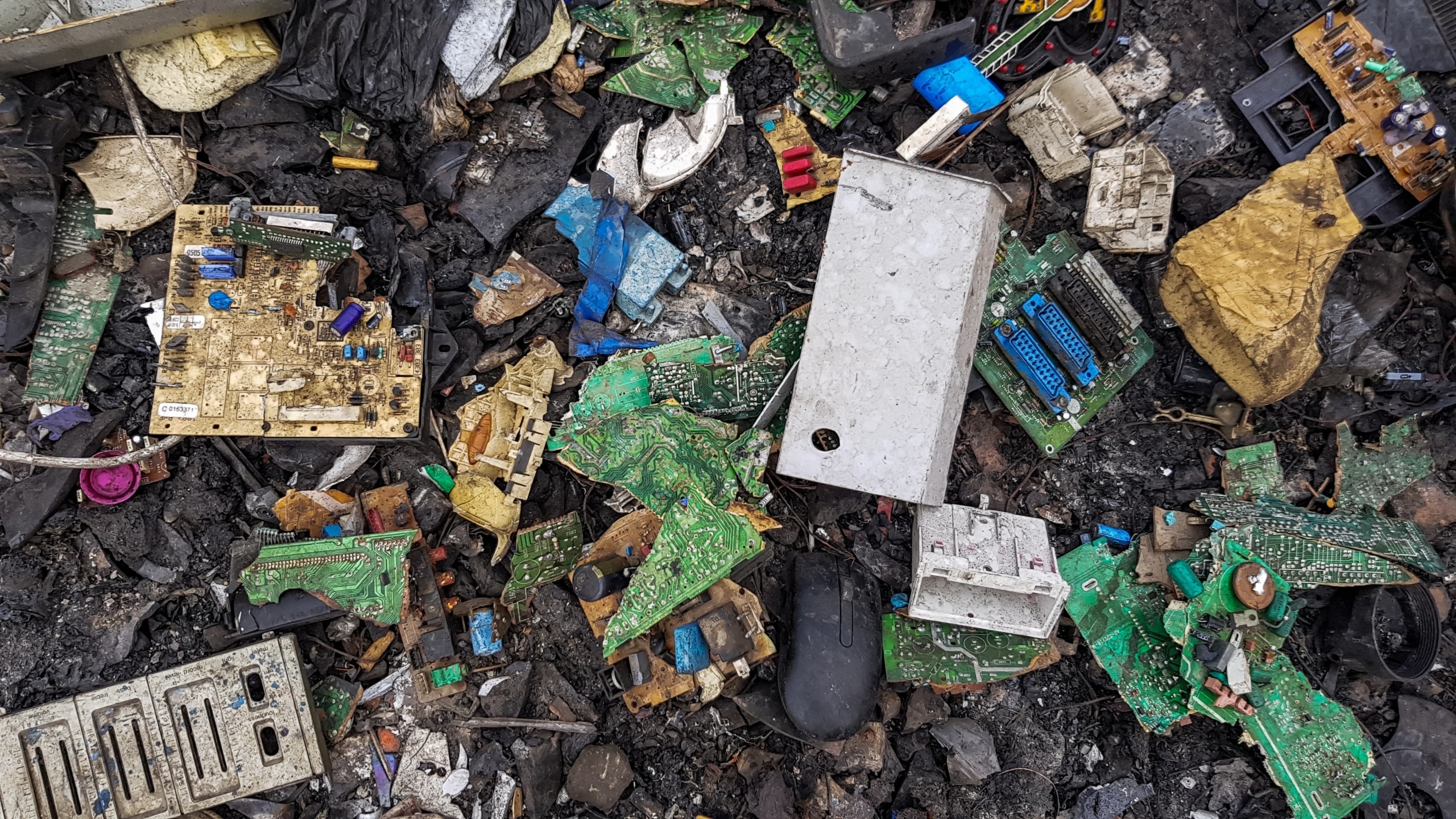Sustainability matters.
Sustainability matters at Conserv. We’re on a mission to help preserve our shared cultural heritage for future generations. Part of that mission involves creating a sustainable business model where we can serve our customers well and profitably while also limiting our environmental impact. A business model with sensor hardware has the potential to create a negative environmental impact, and we have some ideas on how to overcome the challenge.
Electronic Waste isn’t Sustainable
Humans create over 45 MILLION tons of electronic waste every year. That’s 45 million tons of particularly nasty trash. A small fraction of that is recycled, most is not, and this is definitely the case in the environmental monitoring industry.
We were shocked to see how often environmental monitoring sensors were thrown in the trash at the end of their useful lives. So when we sat down to design our product and lay out priorities, we put sustainability at the top of the list.
Creating more landfill waste is a bad approach, but what’s a company that makes devices to do about it?
Reuse, Refurbish, and Recycle
Conserv sells a sustainable environmental monitoring sensor and software solution as a subscription. As part of the subscription, regular maintenance and re-calibration are just handled. You don’t have to think about it.
Every 36 months we ship you new sensors, you ship us the old devices. With the devices you send back, we refurbish them. We keep the larger radio board as well as the enclosure, and we recycle the small sensor board. We then put a new sensor board onto the device.
This new sensor board includes new and more accurate sensing capabilities ensuring that you always have the latest tech. If our new sensor design includes a new particulate sensor or a new visitor counting sensor then you’ll receive those new features every 30 months in your new sensor.
You will never find yourself looking at a sensor from 1999 that’s been doing the same old thing for two decades. So let’s talk about how this fits into our sustainability story.
Be Sustainable with Conserv
Circular Design is the Sustainable Answer
Our subscription process and sensor life cycle management is built around the principles of circular design. While traditional product flows have been linear in nature – products are made, bought, used, and when they are no longer needed, disposed of – circular design embraces a different approach.
Our devices are designed so that everything that goes into them can either be re-used, refurbished, or recycled (in that order). Here’s how it works.
We reuse components
Our core electronic components are separated into two parts. The first component, a radio board that supports our wireless capabilities, is relatively expensive is designed for a long life and can be reused over and over again – no planned obsolescence. This radio board is reused over and over again as we put refurbished devices out into the field.
The second component, the sensor board that does the measurement, is a small, relatively inexpensive piece that is recycled and replaced with a new, more accurate, more capable sensor board.
We refurbish devices
Our device is designed for easy disassembly. The product can be taken apart with a screwdriver and easily broken down into its component parts. This makes it easy for us to get old devices back from our customers, update some components, update the software and put those devices back out into the field, further minimizing our waste.
A refurbished device will be a mix of new and old components that meets our standards of quality.
We recycle where we have to
We strive to use materials in our products that are archival and easily recyclable. This aligns well with our customers’ own needs, where we have to be careful about what resins and other materials we put into sensitive museum environments. Our enclosure is molded from HDPE, one of the most easily recyclable plastics.
Sustainable for the Environment, Sustainable for Customers
By delivering our solution as a subscription service, we can use best practices around reuse, refurbishment and recycling into the product life cycle. When your sensors reach the end of their operational life, we’ll send you new ones.
Drop the old ones in the box when the new ones arrive and send them back to us with a pre-printed shipping label. We’ll make sure they get properly wiped of data, reuse and refurbish what we can, recycle the minimal amount we can’t, and prepare the good-as-new device for redeployment.
Our customers consistently tell us that sustainability is important to them, and we are committed to our shared goal. It’s good business.
🍃 We donate .5% of revenue to carbon removal technology through Stripe Climate
If you have any questions about environmental monitoring, integrated pest management, or just want to talk about preventative conservation, please reach out to us! Don’t forget to check out our blog or join our community of collections care professionals where you can discuss hot topics, connect with other conservators or even take a course to get familiar with the Conserv platform.




